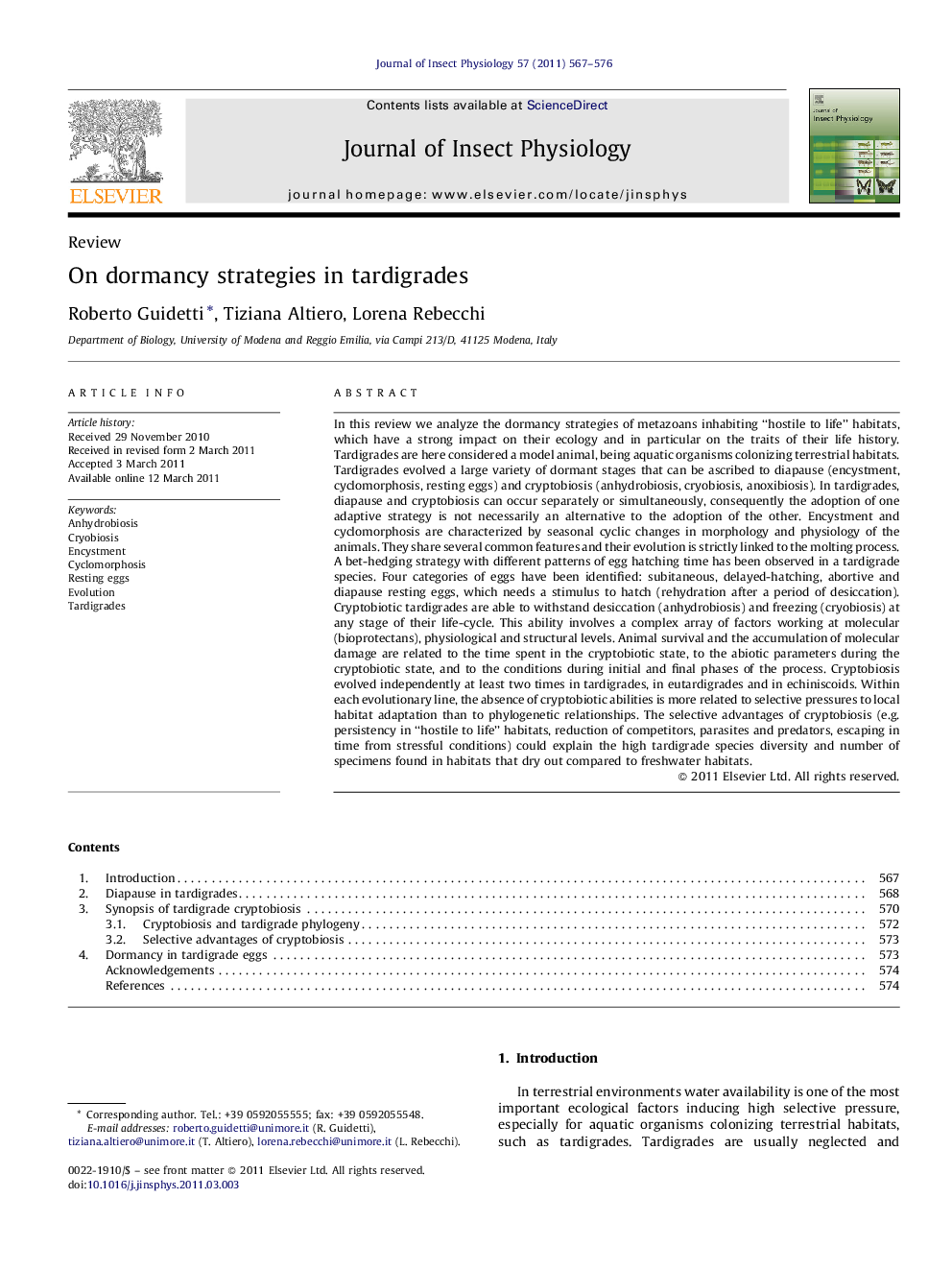| کد مقاله | کد نشریه | سال انتشار | مقاله انگلیسی | نسخه تمام متن |
|---|---|---|---|---|
| 2840599 | 1165340 | 2011 | 10 صفحه PDF | دانلود رایگان |

In this review we analyze the dormancy strategies of metazoans inhabiting “hostile to life” habitats, which have a strong impact on their ecology and in particular on the traits of their life history. Tardigrades are here considered a model animal, being aquatic organisms colonizing terrestrial habitats. Tardigrades evolved a large variety of dormant stages that can be ascribed to diapause (encystment, cyclomorphosis, resting eggs) and cryptobiosis (anhydrobiosis, cryobiosis, anoxibiosis). In tardigrades, diapause and cryptobiosis can occur separately or simultaneously, consequently the adoption of one adaptive strategy is not necessarily an alternative to the adoption of the other. Encystment and cyclomorphosis are characterized by seasonal cyclic changes in morphology and physiology of the animals. They share several common features and their evolution is strictly linked to the molting process. A bet-hedging strategy with different patterns of egg hatching time has been observed in a tardigrade species. Four categories of eggs have been identified: subitaneous, delayed-hatching, abortive and diapause resting eggs, which needs a stimulus to hatch (rehydration after a period of desiccation). Cryptobiotic tardigrades are able to withstand desiccation (anhydrobiosis) and freezing (cryobiosis) at any stage of their life-cycle. This ability involves a complex array of factors working at molecular (bioprotectans), physiological and structural levels. Animal survival and the accumulation of molecular damage are related to the time spent in the cryptobiotic state, to the abiotic parameters during the cryptobiotic state, and to the conditions during initial and final phases of the process. Cryptobiosis evolved independently at least two times in tardigrades, in eutardigrades and in echiniscoids. Within each evolutionary line, the absence of cryptobiotic abilities is more related to selective pressures to local habitat adaptation than to phylogenetic relationships. The selective advantages of cryptobiosis (e.g. persistency in “hostile to life” habitats, reduction of competitors, parasites and predators, escaping in time from stressful conditions) could explain the high tardigrade species diversity and number of specimens found in habitats that dry out compared to freshwater habitats.
.Figure optionsDownload as PowerPoint slideHighlights
► The wide range of dormancy strategies in tardigrades is reviewed (encystment, cyclomorphosis, resting eggs, anhydrobiosis, cryobiosis, anoxibiosis).
► We discuss some aspects of the evolution of diapause (linked to the molting process) and cryptobiosis (which originated convergently twice within the phylum).
► The abiotic and biotic factors affecting the cryptobiotic process are analyzed.
► The selective advantages of cryptobiosis are discussed.
Journal: Journal of Insect Physiology - Volume 57, Issue 5, May 2011, Pages 567–576